Córdoba, the capital of the province of the same name, lies in the southern foothills of the Morena mountains, on the banks of the Rio Guadalquivir, about 130 kilometres upstream from Seville.
By Liza S. | Updated 12 Jan 2024 | Córdoba | Cities |
Login to add to YOUR Favourites or Read Later
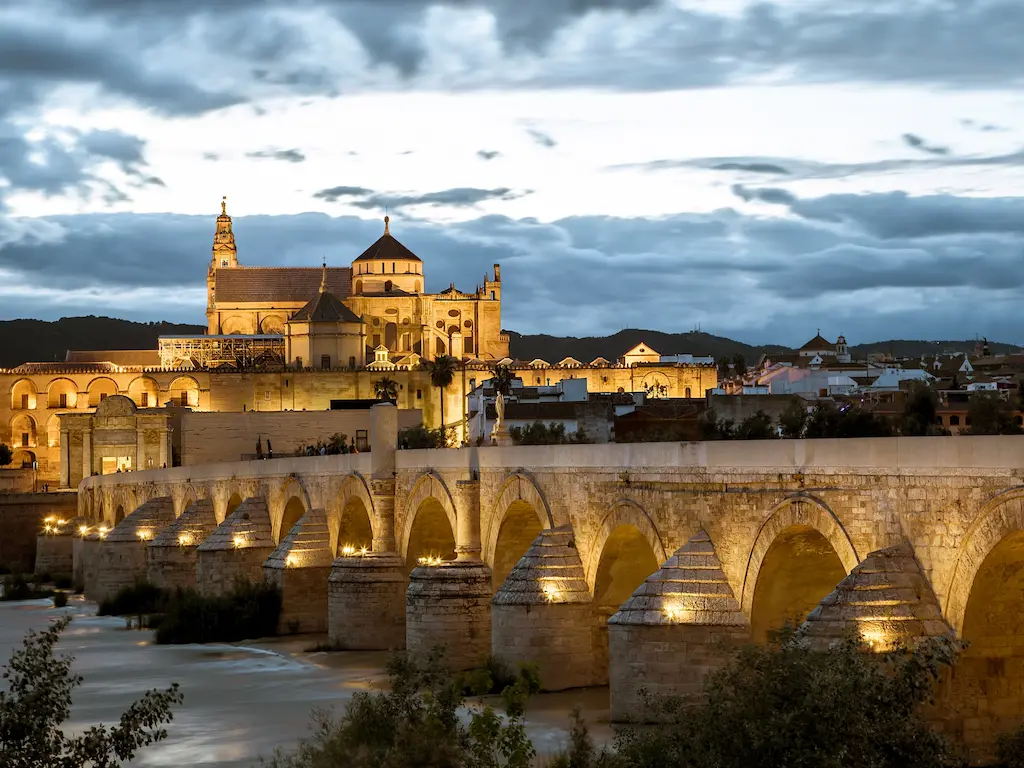

Roman Bridge in Cordoba
Welcome to Cordoba, one of the most beautiful and historic cities in Spain! With its rich history, stunning architecture, and vibrant culture, Cordoba is a must-see destination for anyone traveling to Andalucia.
Whether you're interested in exploring the city's many historical sites, tasting its delicious cuisine, or simply soaking up the vibrant atmosphere of its streets and squares, Cordoba has something for everyone. In this travel guide, we'll provide you with all the essential information you need to plan a great visit to Cordoba, from the best time to visit to the top attractions to see and the best places to stay.
So, whether you're a first-time visitor or a seasoned traveller, let's dive in and discover all that Cordoba has to offer.
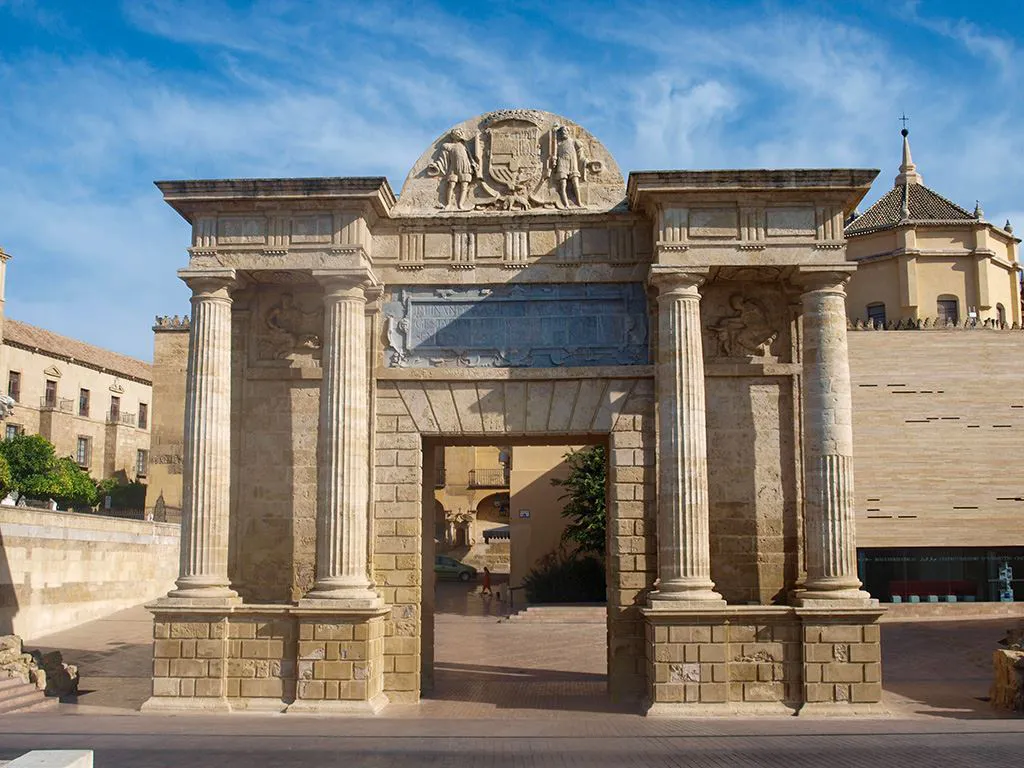
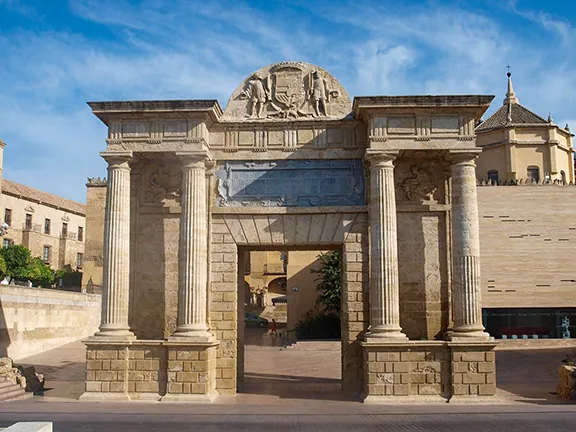
Bridge Gate, Cordoba
When you visit Córdoba, you'll be stepping into a city with a rich and diverse history. Located in the heart of Andalucia, Córdoba has been inhabited by various cultures throughout the centuries, each leaving their mark on the city's culture, art, and architecture.
The city's history dates back to the Iberian Peninsula, where it was originally a Roman settlement from around 152 BCE. During the Roman era, the city prospered and became an important hub for olive oil production. Many of the city's buildings, including the famous Roman Bridge, still stand today as a testament to this era.
After the fall of the Roman Empire, Córdoba was conquered by the Visigoths, who ruled until the arrival of the Moors in the 8th century. The Islamic conquest of Córdoba marked the beginning of a golden age for the city. Under the rule of the Moors, Córdoba became a centre of learning and culture, with a thriving arts and sciences scene.
One of the most iconic structures from this era is the Mezquita of Córdoba, also known as the Mezquita-Catedral. This stunning mosque-cathedral is a testament to the Islamic architecture of the time, with its intricate columns and arches.
In the 13th century, Córdoba was conquered by the Christian Kingdom of Castile. The city underwent significant changes during this time, with many of its Islamic buildings being converted into Christian places of worship. Despite this, many of the Islamic influences can still be seen in the city's architecture and culture.
Today, Córdoba is a UNESCO World Heritage Site and a popular tourist destination. Visitors can explore the city's old town, with its narrow streets and picturesque patios, or visit the nearby ruins of Medina Azahara, a once-thriving medieval city.
For more on the city’s interesting history, read our historical guide to Cordoba.
If you're planning a trip to Córdoba, you'll need to know how to get there. Luckily, the city is well-connected to the rest of Spain, making it easy to reach by plane, train, bus or car. Here's a breakdown of the transportation options available to you.
So if you’re arriving by air, you'll likely need to fly into Seville or Malaga, which are both around 2 hours away from Cordoba. From there, you can drive or take a train or bus to Córdoba. I would recommend flying into Seville airport as it’s a bit nearer and there are frequent train connections to Cordoba.
There are also regular trains to Córdoba from other cities in Andalucia, such as Granada and Malaga.
I love travelling in Spain by train so in my opinion, if there’s a direct connection from your departing city, this is the best way to get to Cordoba.
Taking the bus is often cheaper than the train so this is a great option if you’re on a budget. Buses in Spain are reliable and pretty comfortable so it’s not a bad way to travel.
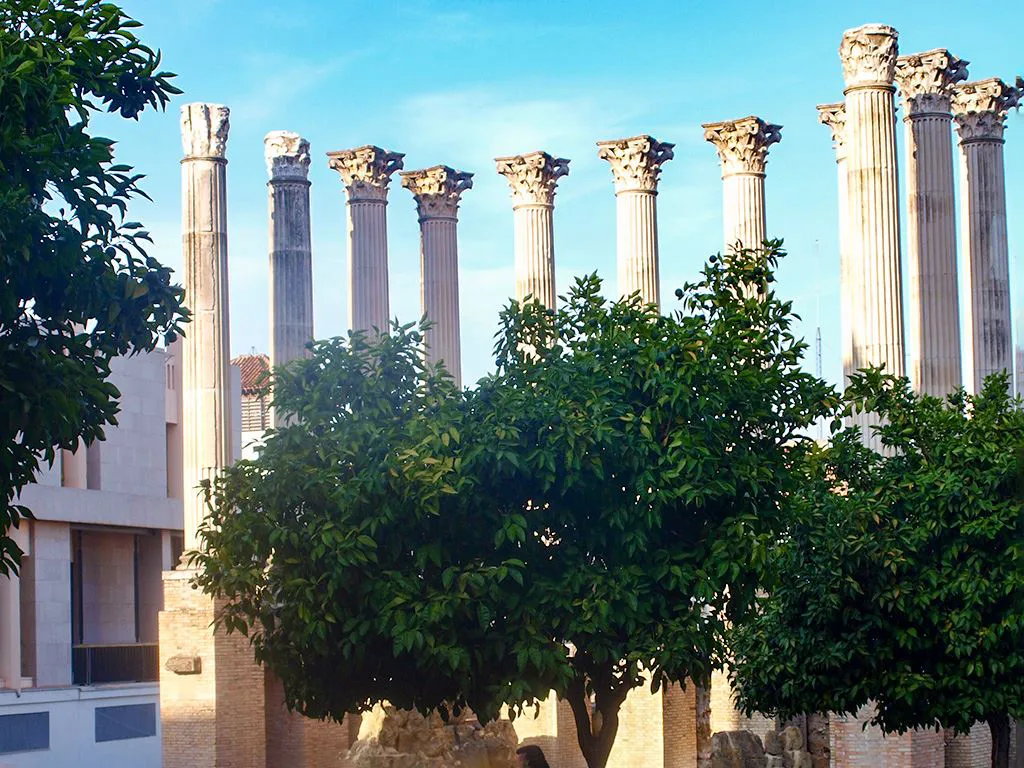
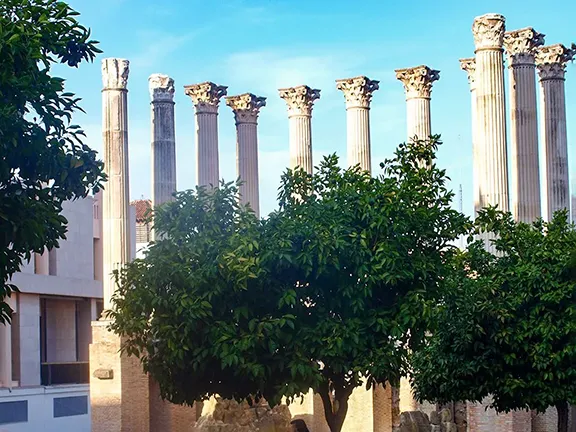
Roman Temple, Cordoba
One thing to note is that parking is tough in the historic centre so you’re better off parking outside of the centre and then just walking and using public transportation within Cordoba itself.
Cordoba is a compact city, and most of its attractions are located within walking distance from each other.
Walking is the best way to explore the city's historic centre, including the Jewish Quarter, the Mosque-Cathedral, and the Alcazar. Walking also allows you to discover the hidden gems of Cordoba, such as its charming streets, plazas, and parks.
If you're looking for a fun and eco-friendly way to explore Cordoba, consider renting a bike. There are several bike rental shops in the city, and you can choose from a range of bikes, including city bikes, mountain bikes, and electric bikes. Biking allows you to cover more ground than walking while enjoying the city's sights and sounds.
Another fun way to explore Cordoba is by Segway. A Segway tour allows you to visit the city's main attractions while gliding through its streets and alleys. Segway tours are led by knowledgeable guides who will provide you with information about Cordoba's history, culture, and architecture.
For a romantic and nostalgic way to explore Cordoba, consider taking a horse carriage ride. Horse carriages are available in the city centre, and they offer a unique perspective of Cordoba's landmarks, such as the Mosque-Cathedral and the Alcazar. Horse carriage rides are also a great option for families with children or elderly travellers who may find walking or biking challenging.
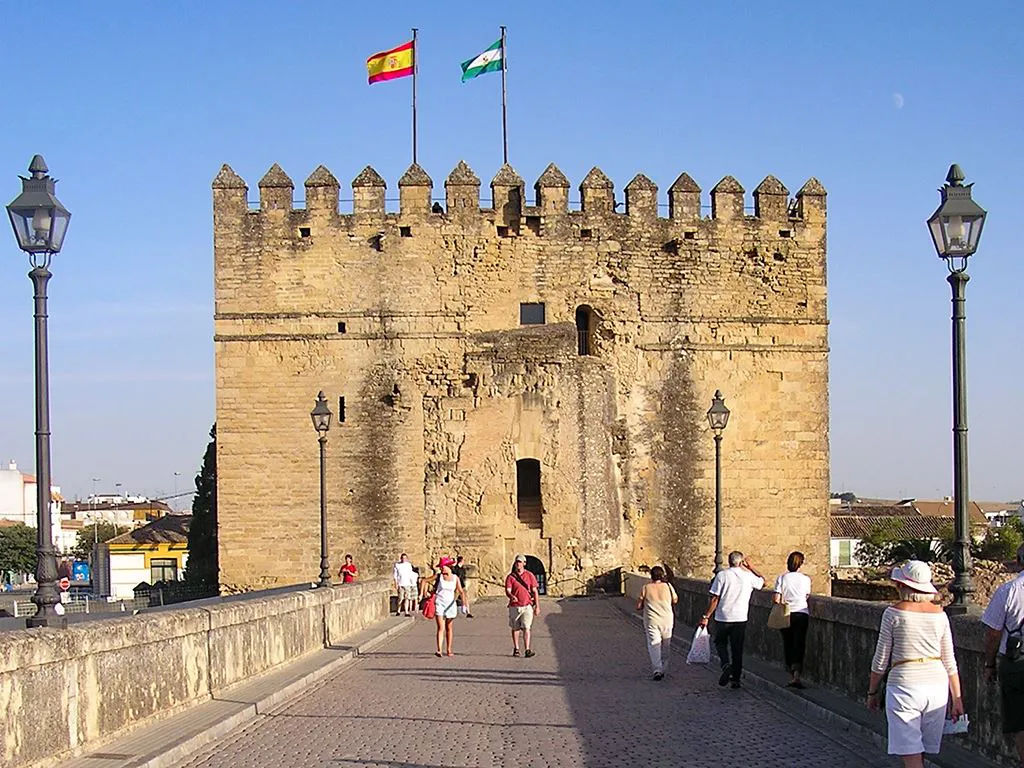
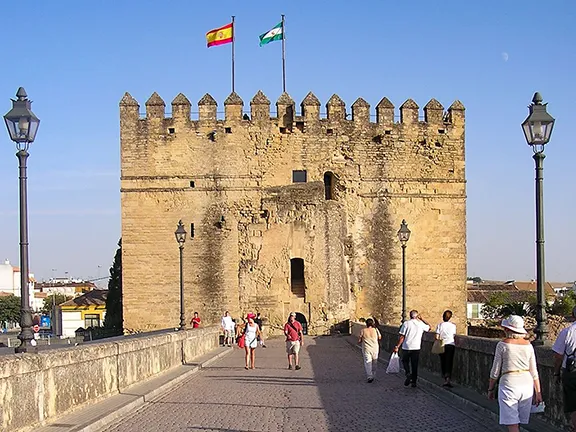
Calahorra Fort Cordoba
Taxis are also widely available and you can hail them on the street or book them in advance. They’re more expensive than buses but are a convenient option for short distances or when you're in a hurry.
The best time to visit Cordoba, Spain is during the spring or fall seasons.
The months of April, May, September, and October are ideal times to visit Cordoba because the weather is mild and pleasant. During these months, the average temperature ranges from 15°C to 25°C, making it comfortable to explore the city's many attractions.
In addition to the comfortable weather, visiting Cordoba during the spring or fall means avoiding the crowds that come during the peak summer season. This allows you to enjoy popular attractions such as the Mezquita-Catedral and the Alcazar de los Reyes Cristianos without the large crowds that can make it difficult to fully appreciate the beauty and history of these sites.
Visiting Cordoba during the spring or fall offers a perfect balance of comfortable weather, smaller crowds, and the opportunity to fully appreciate the city's many attractions.
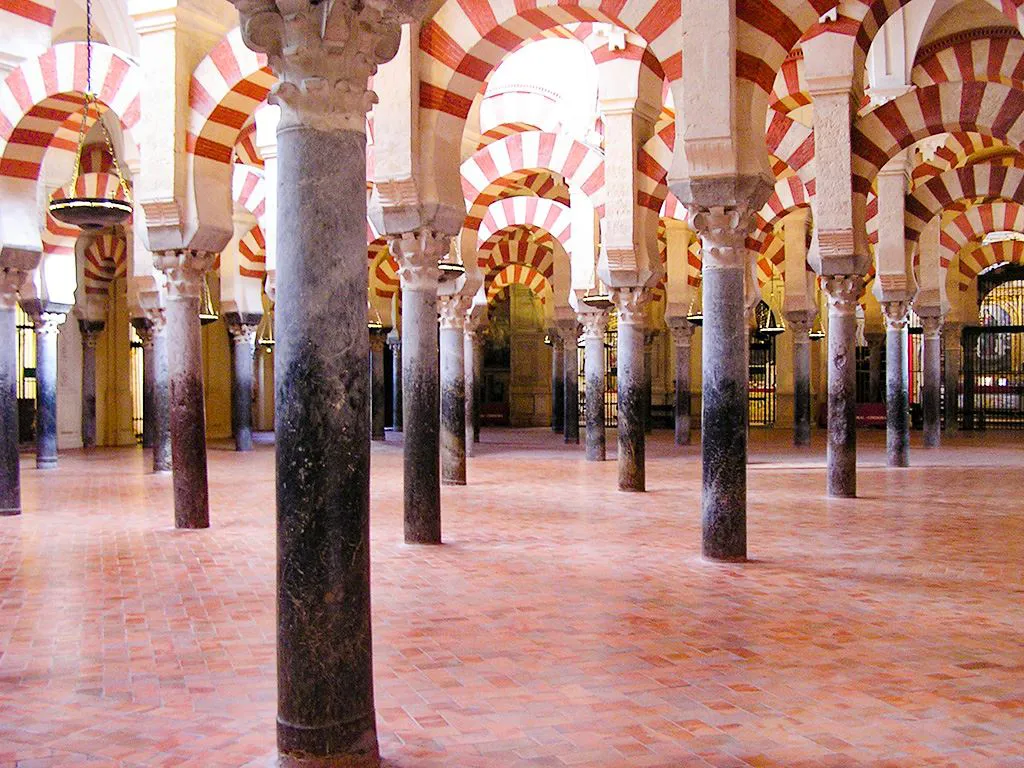
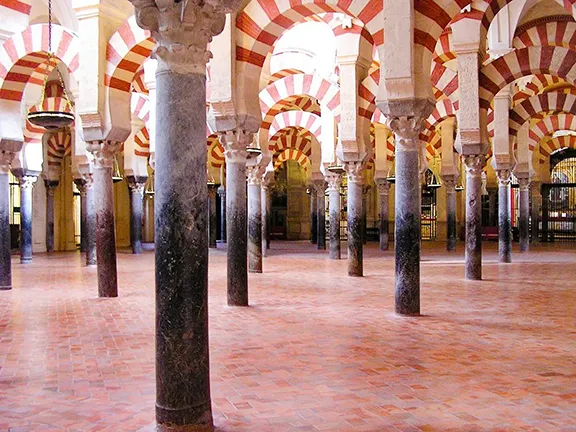
Mezquita, Cordoba
Christian, and Jewish influences blend together seamlessly in an unforgettable way. In my opinion, the Mezquita (which is a UNESCO World Heritage Site) is one of the most fascinating monuments in the world and visiting it alone would make a trip to Cordoba worth it!
But beyond the mosque-cathedral, Cordoba has lots to offer. Here are the top 10 things to do in Cordoba, Spain.
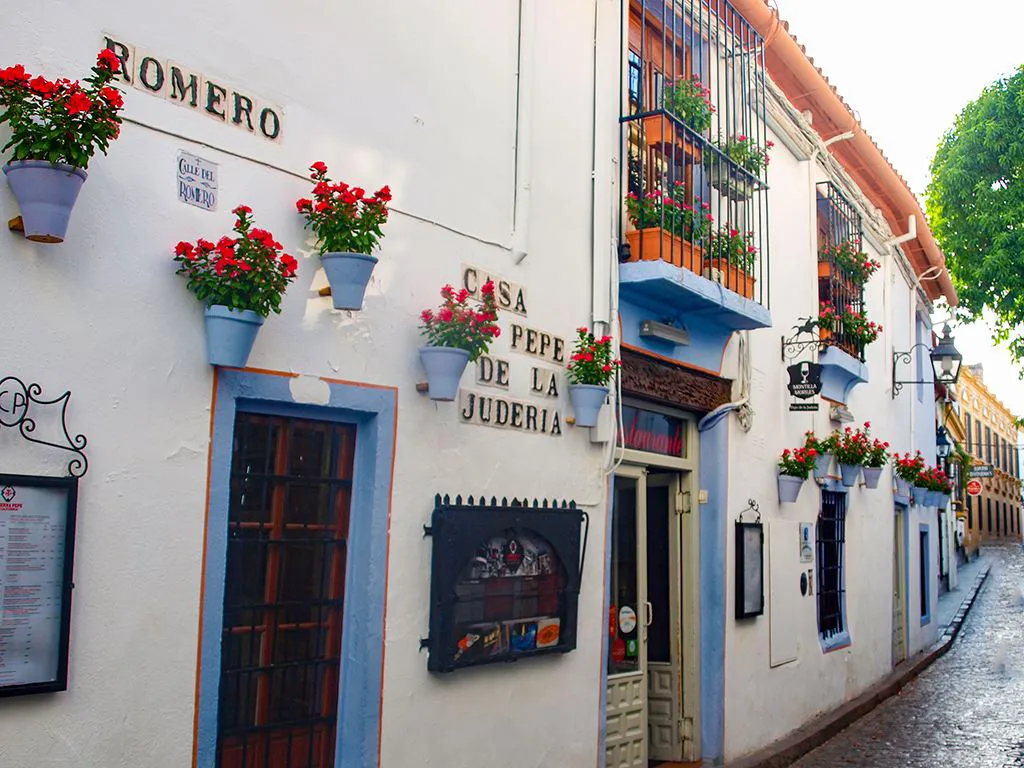
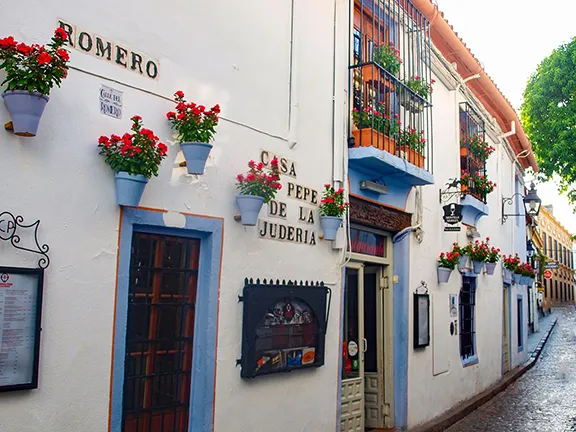
La Juderia Cordoba
Discover all the amazing things to do in Cordoba in our guide to what to see and do in Cordoba.
Visiting just for a day? Read our Cordoba day trip guide to plan your visit!
You may also like these top experiences and activities in Cordoba.
One of the reasons I love this city is because some of the best places to eat are in the two emblematic squares in the city where there is always something going on.
There is the Plaza de las Tendillas with its water jets and fountains, illuminated at night. The huge square is surrounded by monumental buildings. Then there is Plaza de la Corredera, probably the more famous of the two squares because of its colonnaded arcades around all four sides, unique in Andalucia. This was and is the social hub of Córdoba where in days gone by you may have enjoyed a bullfight, a party or even, during the Inquisition, a public execution.
A recently opened venue is the Mercado Vistoria on Puerto de la Victoria, just outside the old town on the west side. Open from breakfast through to late evenings, this is a food hall par excellence. The choice of food is huge, fish, meats, vegetarian, Italian, Spanish, Moroccan and more. The choice of drinks is massive. Just choose what you want, take it to a free table, indoors or out, and eat whilst people watching. A couple of the bars also have live entertainment in the evenings. Busy throughout the week and rammed at weekends.
Like most of Andalucia, Cordoba has a vibrant festival scene that showcases the city's rich culture and history. Here are some of the most popular festivals in Cordoba.
This festival is a must-see for anyone interested in Andalucian culture and architecture.
Read more about the Cordoba Patio Festival.
During the fair, the fairground is transformed into a colorful and lively village, with hundreds of casetas (marquees) set up for the occasion. You can enjoy rides, games, and food stalls, as well as traditional music and dance performances. If you're looking to experience the lively atmosphere of a Spanish fair, the Fair of Cordoba is not to be missed.
Click here to learn more about the Cordoba Fair.
Cordoba is one of the best places to experience Semana Santa in Andalucia, with elaborate processions featuring ornate floats and religious statues. The atmosphere during Semana Santa is solemn and respectful, making it a unique and moving experience for visitors.
Learn more about Semana Santa in Andalucia.
This music festival takes place in July and features performances by some of the world's best guitarists, as well as flamenco dancers and other musicians.There are also workshops, masterclasses, and exhibitions, providing visitors with the opportunity to learn more about the guitar and its history, as well as to meet and learn from some of the world's most talented guitarists.
Festival de la Guitarra de Cordoba is a must-see event for anyone interested in music and guitar culture, and is a great way to experience the vibrant and cultural atmosphere of the city of Cordoba.
If you're staying in Cordoba for a few days, you definitely want to take advantage of the city's central location in Andalucia and explore some of the nearby destinations. There are several day trips from Cordoba that are well worth a visit, including beautiful whitewashed villages, natural parks, and other famous cities.
Located just outside of Cordoba city and easily accessible by bus, the archaeological site of Medina Azahara is a must-see for history buffs. This ancient city was built in the 10th century and was the capital of the Umayyad Caliphate. You can explore the ruins of the palace, the mosque, and the gardens, and learn about the fascinating history of Islamic Spain.
If you have a penchant for Baroque churches, then a day trip to Priego de Cordoba is a must. This charming town is known to have the most beautiful collection of such buildings in Spain. The town also boasts a castle, a medieval quarter, and several fountains and gardens. You can stroll through the narrow streets, admire the stunning architecture, and enjoy the local cuisine.
Seville is one of the most famous and beautiful cities in Spain, and it's less than an hour away from Cordoba by train. The city is known for its stunning cathedral, the Alcazar palace, and the Plaza de España. You can also explore the narrow streets of the Santa Cruz neighbourhood, visit the Metropol Parasol, and enjoy the local tapas.
If you're looking for some outdoor adventure, then a day trip to the Natural Park of the Sierras Subbéticas is perfect for you. The park is full of rugged mountains, mysterious caves, and stunning landscapes. You can go hiking, cycling, or horseback riding, and explore the local flora and fauna.
Just a 40-minute drive from Cordoba, this charming whitewashed village near Cordoba offers a rich history, stunning natural landscapes, and warm hospitality. Visitors to Montoro can explore the town's many historical sites, including the Castle of Montoro and the Church of San Bartolome, or take a stroll along the Guadalquivir River.
While many travellers visit Cordoba on a day trip, it’s well worth it to stay a night or two to truly discover the city’s many charms.
La Juderia is the Jewish Quarter and the most charming area in Cordoba. It is also the most popular area for tourists to stay in. Here you will find narrow streets, whitewashed buildings, and beautiful patios. There are plenty of bars and restaurants in the area, making it an excellent choice for foodies.
The Cordoba city centre is also a great neighbourhood to stay in if you want to be close to all the action. Here you will find a mix of modern and historic buildings, as well as plenty of shops, bars, and restaurants.
Want to escape the crowds? Then choose San Basilio, a quieter neighbourhood located just outside the city centre. San Basilio is home to some of the best hotels in Cordoba, many of which are housed in historic buildings.
I personally prefer to stay in or near the historic center and with so many choices, you’ll be able to find a place that suits your travel style and budget. Here are some hotels to consider.
Or check out the latest deals in Cordoba below.
Booking.com
Travelling to/around Spain and need some help? Here are our favourite travel resources.
We usually use Booking.com to look for hotels or apartment rentals. Lots of choice & you can unlock more discounts with their Genius loyalty programme!
To research transportation options around Spain, we like using Omio. It’s an easy way to compare different modes of transport and prices in one place.
For last-minute holiday deals, check out Expedia UK.
Looking for things to do? Viator has a huge catalog of activities and tours across many cities in Spain. We also love Get Your Guide!
Guruwalk is our favourite platform to find the best free walking tours in a city.
For money transfers or spending overseas in foreign currency, Wise is our favorite borderless banking service.
Travel insurance is a must to protect against emergencies and unexpected incidents. Get a quote from SafetyWing here.